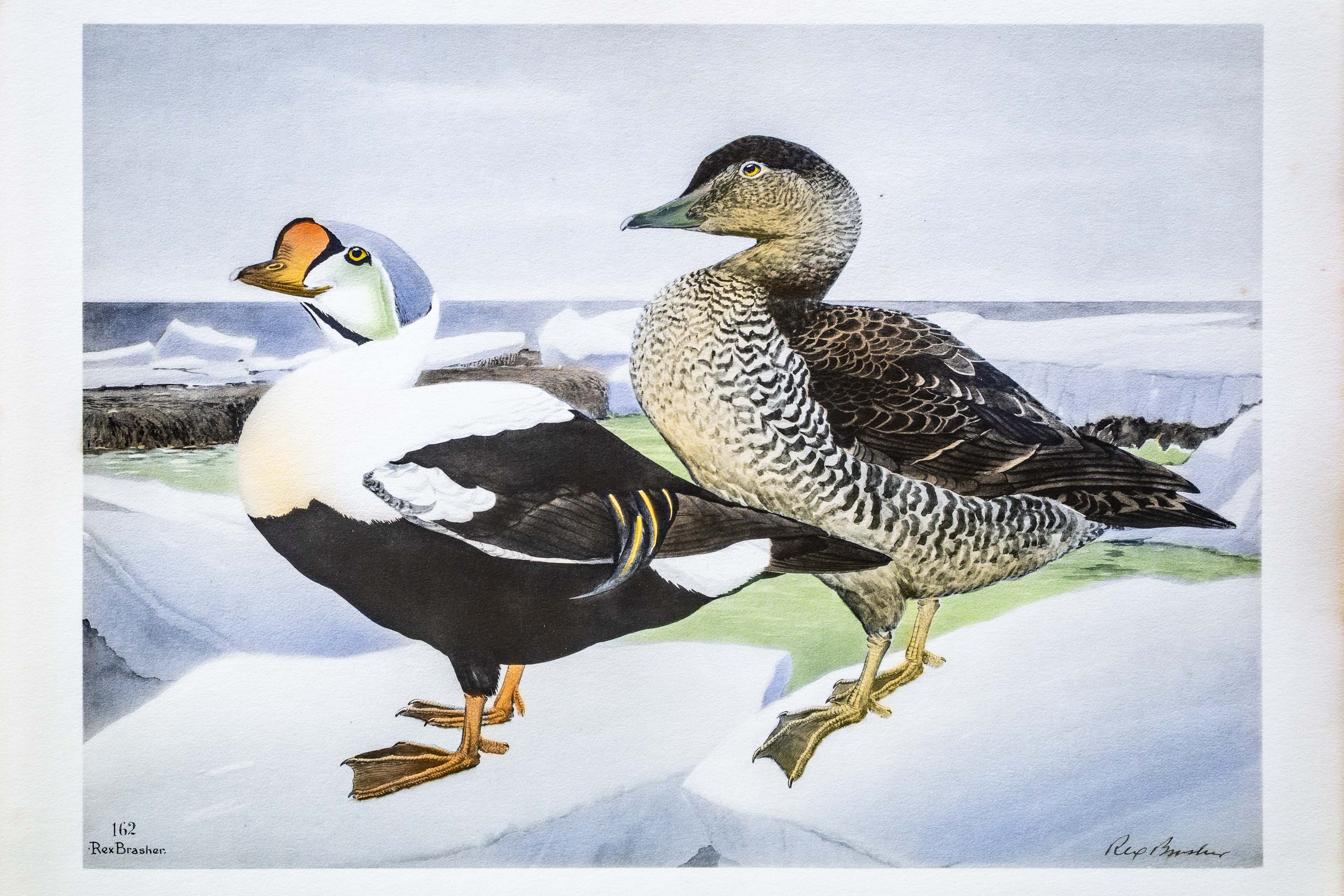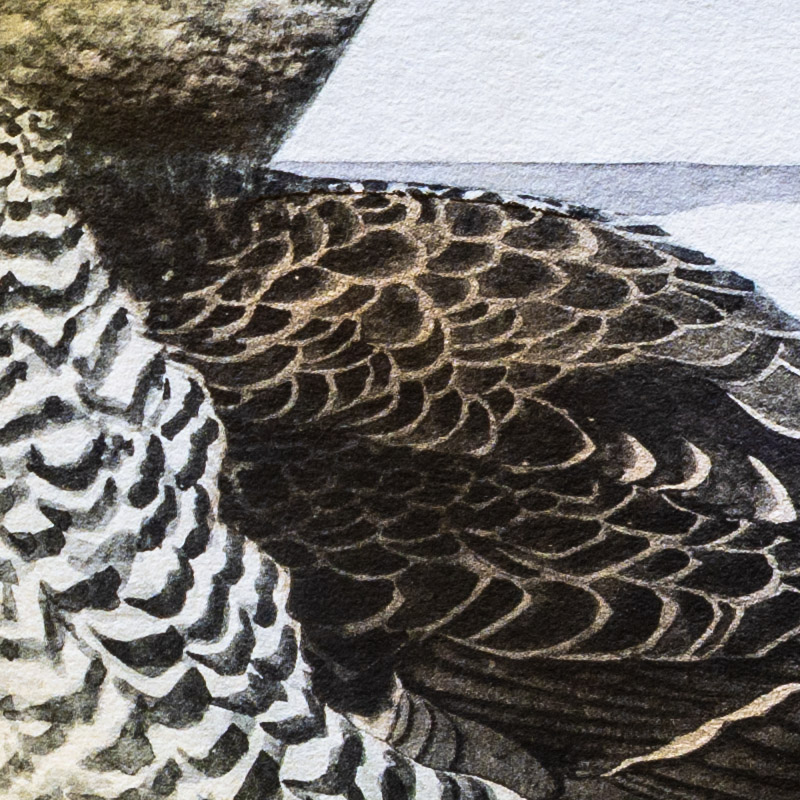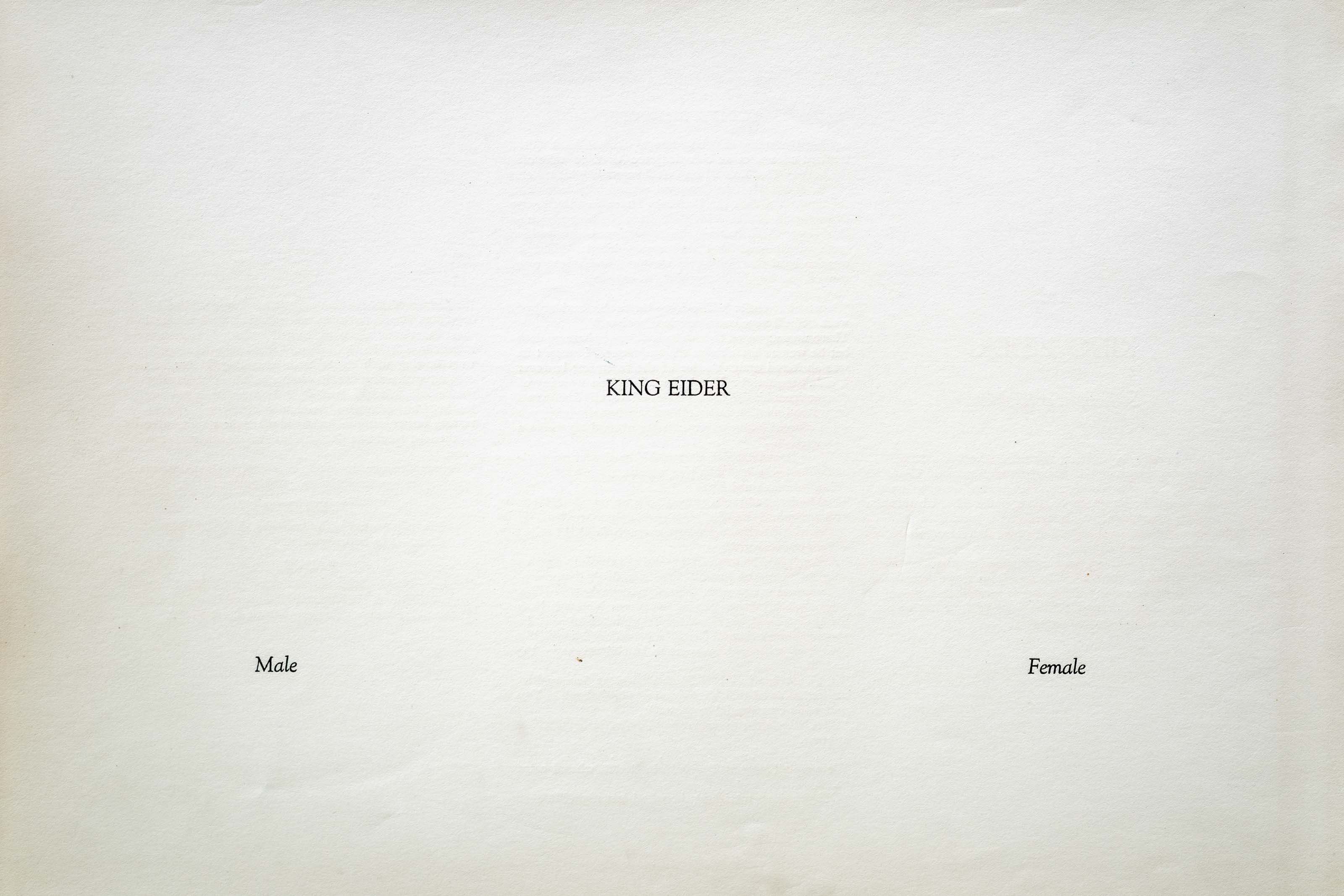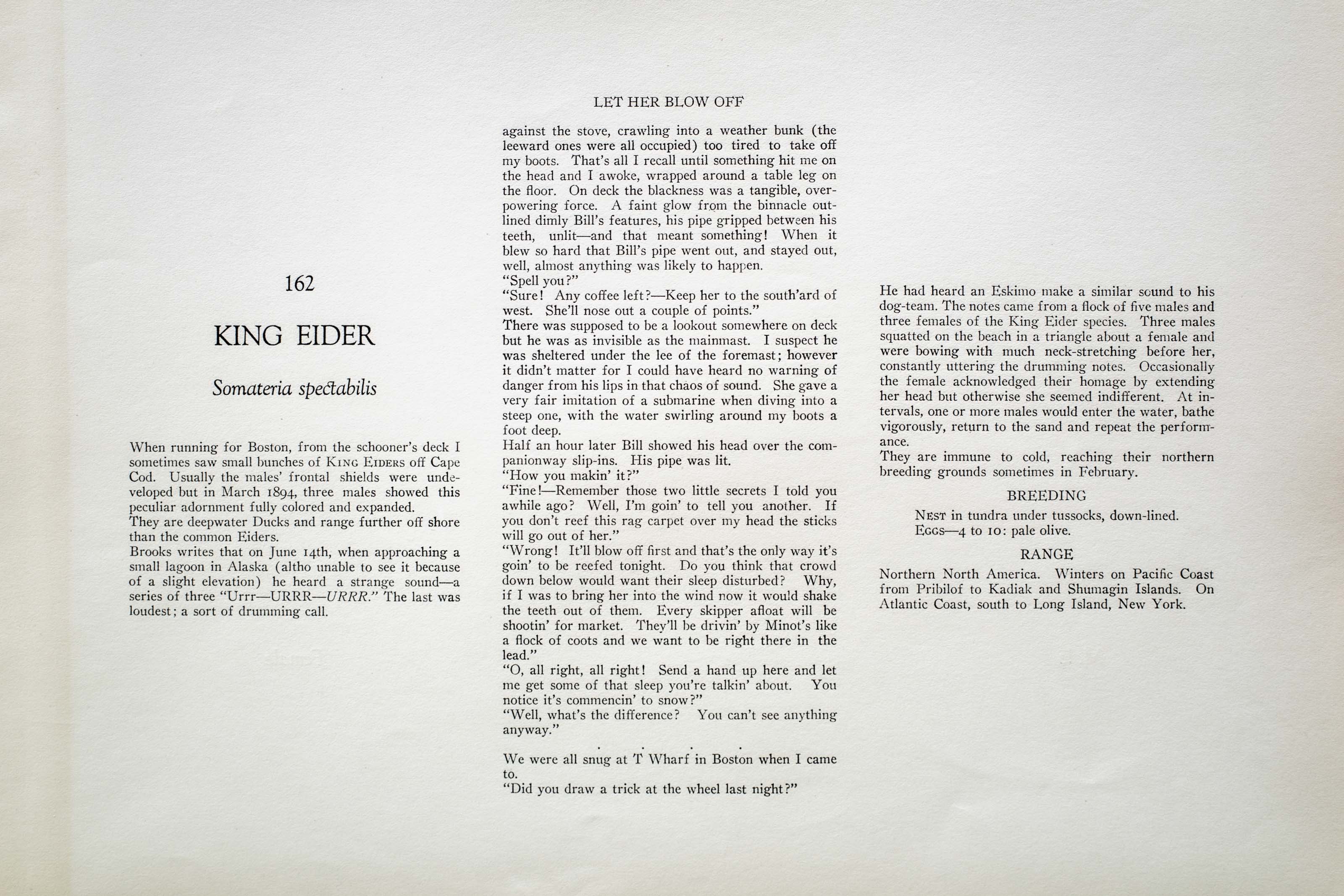






Unknown
1930
3
162
A team of dedicated board members, volunteers, and student interns has published every page in Volume 9. This volume includes 360 images of paintings and lyrical descriptions of birds, now available online for everyone to enjoy anywhere in the world. This is a monumental task. Each volume requires approximately 400 hours to photograph, edit, transcribe, catalog, and publish online. We need your support to complete this work.
If you're tech-savvy, have a good eye, are meticulous with details, and love structured data, please consider volunteering by emailing us at hello@rexbrasher.org.
We encourage all bird lovers and supporters to consider a monetary donation to support our mission to make Rex's work available for everyone. You can provide a one-time or recurring donation online.
When running for Boston, from the schooner's deck I sometimes saw small bunches of KING EIDERS off Cape Cod. Usually the males' frontal shields were undeveloped but in March 1894, three males showed this peculiar adornment fully colored and expanded.
They are deepwater Ducks and range further off shore than the common Eiders.
Brooks writes that on June 14th, when approaching a small lagoon in Alaska (altho unable to see it because of a slight elevation) he heard a strange sound — a series of three "Urrr — URRR — URRR." The last was loudest; a sort of drumming call.
He had heard an Eskimo make a similar sound to his dog-team. The notes came from a flock of five males and three females of the King Eider species. Three males squatted on the beach in a triangle about a female and were bowing with much neck-stretching before her, constantly uttering the drumming notes. Occasionally the female acknowledged their homage by extending her head but otherwise she seemed indifferent. At intervals, one or more males would enter the water, bathe vigorously, return to the sand and repeat the performance.
They are immune to cold, reaching their northern breeding grounds sometimes in February.
NEST: in tundra under tussocks, down-lined.
EGGS — 4 to 10: pale olive.
Northern North America. Winters on Pacific Coast from Pribilof to Kadiak and Shumagin Islands. On Atlantic Coast, south to Long Island, New York.